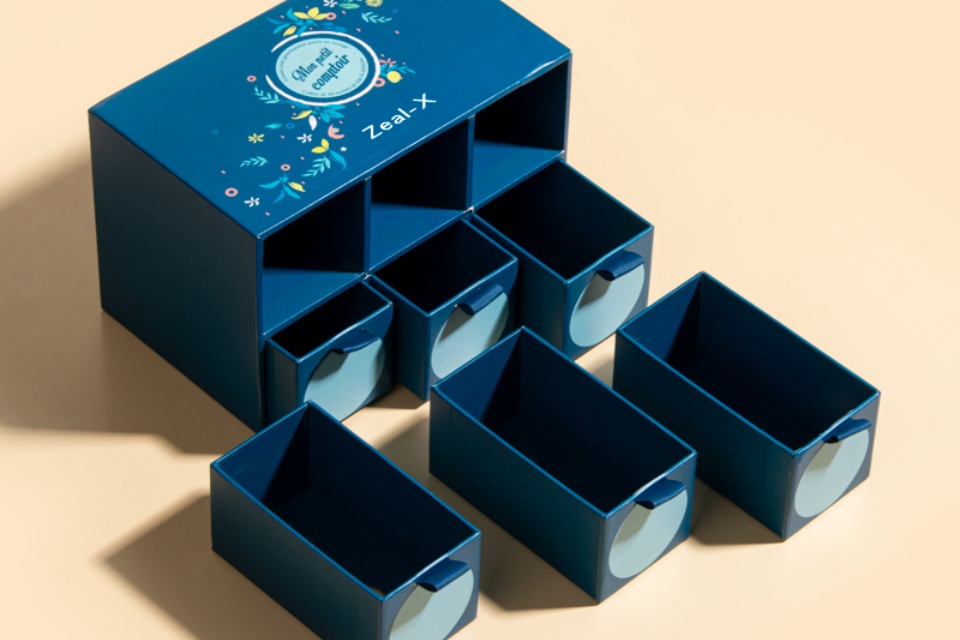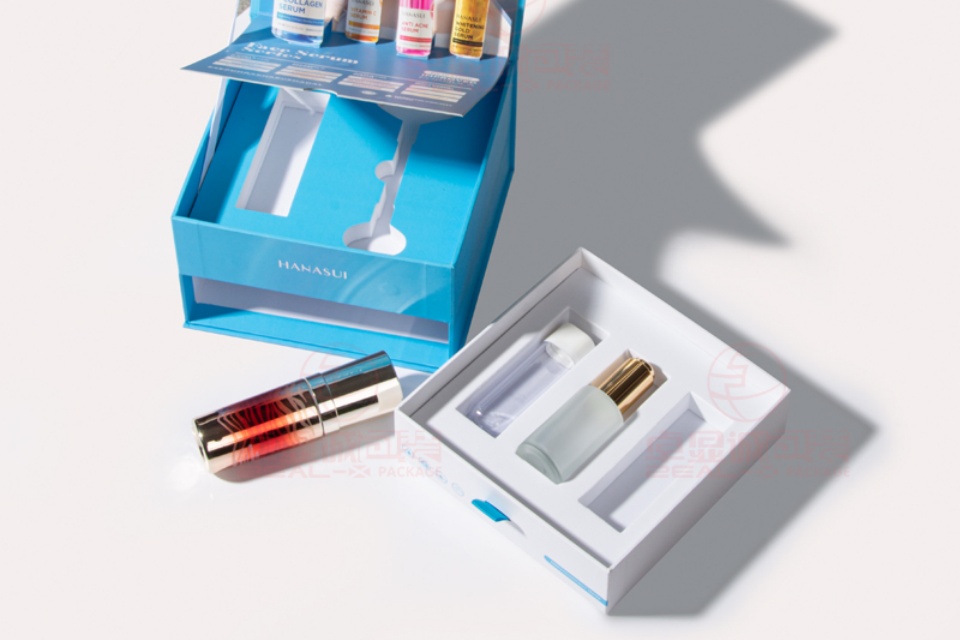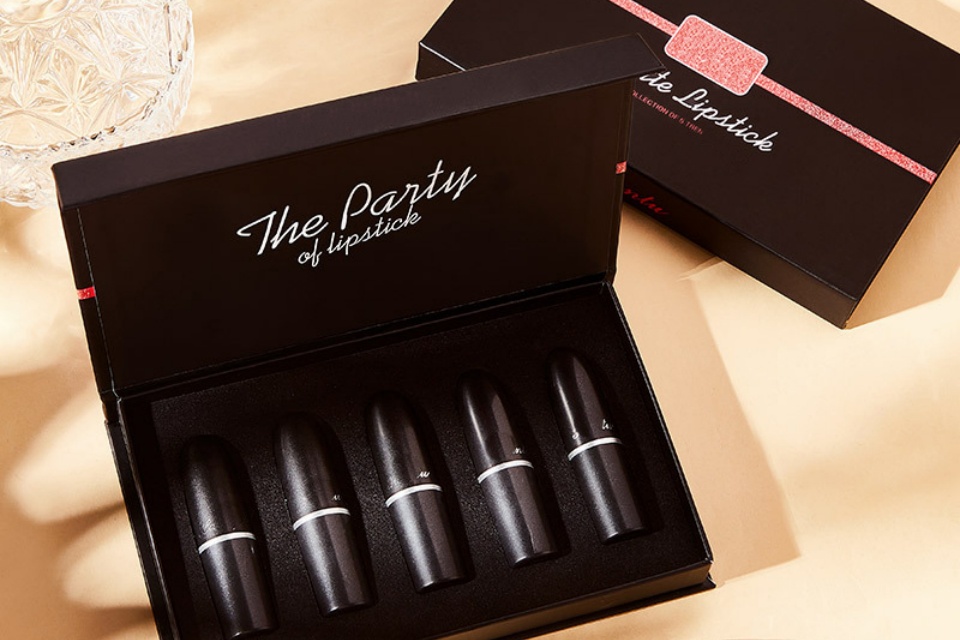Our News
Cosmetic Packaging Design Trends In 2025
Cosmetic Packaging Design Trends In 2025
Summary
Cosmetic packaging design trends for 2025 are characterized by an increasing focus on sustainability, minimalism, and technological integration, reflecting evolving consumer preferences in the beauty industry. As environmental concerns rise, brands are prioritizing eco-friendly materials, such as biodegradable plastics and recycled components, to reduce waste and align with consumer values. The trend towards mono-material packaging, which enhances recyclability, is also gaining traction, alongside innovations like refillable and reusable containers that promote sustainable consumption.
In terms of aesthetics, minimalist design principles are becoming predominant, featuring clean lines, muted colors, and clear typography that resonate with consumers' desire for simplicity and functionality. The use of natural color palettes, such as greens and beiges, reinforces a commitment to sustainability, while the visual appeal of packaging remains crucial for attracting consumers in a competitive market. Furthermore, the psychological impact of color and typography plays a significant role in shaping consumer perceptions, as brands leverage these elements to communicate luxury and sustainability effectively.
Technological advancements are also transforming cosmetic packaging, making it more interactive and informative. The incorporation of QR codes and NFC technology allows consumers to access detailed product information and engage with brands more directly, enhancing transparency and user experience. As personalization becomes increasingly important, brands are exploring options for custom designs that cater to individual preferences, fostering deeper connections with diverse consumer identities and promoting inclusivity in packaging design.
Notable controversies within the industry include the ongoing debate over the effectiveness of sustainable materials versus traditional packaging solutions, as well as the ethical implications of consumerism in beauty. The challenge of balancing luxury with sustainability poses questions about brand identity and market positioning, with consumers increasingly scrutinizing brands' commitments to environmental responsibility. As the beauty landscape continues to evolve, these trends and controversies will shape the future of cosmetic packaging design, influencing both consumer behavior and industry standards.
Overview of Current Trends (as of 2023)
The cosmetic packaging industry is evolving rapidly, driven by a combination of consumer demand for sustainability, innovative design, and technological integration. As we look toward 2025, several key trends are shaping the direction of cosmetic packaging.
Sustainability and Eco-Friendly Practices
Sustainability continues to be a major focus in cosmetic packaging. Brands are increasingly utilizing eco-friendly materials, such as plant-based plastics, biodegradable substances, and recycled materials, to minimize environmental impact. The push towards using mono-material packaging is also gaining traction, as it simplifies recycling processes and enhances recyclability rates, addressing the challenge posed by traditional packaging that often combines multiple materials. Additionally, there is a notable rise in the use of biodegradable and compostable materials like bamboo and molded fiber, which help reduce long-term environmental damage and plastic pollution.
Minimalist Design
The minimalist trend is prominent in the packaging aesthetics of 2025, characterized by clean lines, muted colors, and clear typography. This approach not only enhances product visibility but also reflects consumers' increasing preference for simplicity and functionality. Natural colors such as beige, green, and gray are favored, conveying organic associations and reinforcing a brand's commitment to sustainability.
Technological Integration
Advancements in technology are revolutionizing cosmetic packaging, making it more interactive and informative. Features such as QR codes and NFC technology allow consumers to access detailed product information, usage guides, and promotional offers with ease. This tech-driven approach not only improves user experience but also fosters greater transparency between brands and consumers.
Personalized and Inclusive Packaging
Customization is becoming an essential element of cosmetic packaging, with brands offering personalized options that cater to individual preferences, such as custom colors and scents. Furthermore, inclusive design practices are gaining momentum, as brands recognize the importance of reflecting diverse identities and skin tones within their packaging. This not only builds a positive brand image but also ensures that all customers feel acknowledged and respected.
Predicted Trends for 2025
As the beauty industry continues to evolve, several key trends in cosmetic packaging design are anticipated to dominate in 2025. These trends reflect growing consumer preferences for sustainability, aesthetic appeal, and functionality.
Sustainability Takes Center Stage
One of the most significant shifts in cosmetic packaging is the increasing emphasis on sustainability. Brands are expected to adopt biodegradable and recyclable materials, such as glass, aluminum, and post-consumer recycled plastics, which not only reduce waste but also align with consumers' environmental values. Refillable and reusable containers will become more popular, encouraging consumers to repurchase refills instead of new packaging, thereby significantly reducing plastic consumption. Furthermore, minimalist packaging designs that eliminate unnecessary layers will be favored for their alignment with eco-friendly practices.
Material Innovations
The use of mono-material designs, which utilize a single type of material for easier recycling, will gain traction. Natural materials like bamboo and ceramic are projected to become more prominent, appealing to consumers looking for luxury coupled with sustainability. Ceramic packaging is particularly favored for its durability and aesthetic appeal, while bamboo's renewable properties enhance its appeal for eco-conscious brands.
Aesthetic Appeal and First Impressions
In a competitive market, visual appeal remains crucial. Packaging that features eye-catching designs, luxurious finishes, and appealing color palettes will continue to play a vital role in consumer purchase decisions. The psychology of color will be strategically leveraged, with brands using colors to evoke specific emotions—such as green for sustainability and gold for luxury. Typography will also be essential; elegant fonts and well-placed logos enhance brand recognition and consumer trust.
Compact and Portable Designs
As online shopping grows, compact and portable packaging solutions will become increasingly important. Designs that are not only aesthetically pleasing but also functional and easy to transport will meet the needs of a diverse consumer base. Additionally, the development of omnichannel packaging, which caters to various retail environments, will be a focal point in product design strategies.
Eco-Friendly Luxury
The trend of combining sustainability with a luxurious feel is set to rise. High-quality, eco-friendly materials like frosted glass or bamboo closures cater to consumers who desire both sophistication and environmental responsibility. Brands that successfully marry these two elements will likely resonate well with the growing market segment that values sustainable luxury.
Technological Advancements
Lastly, advancements in technology are expected to enhance packaging functionality. Smart packaging that offers digital tracking and sustainability insights will emerge, allowing consumers to engage with brands in new ways while promoting responsible consumption practices. This innovation may also include closed-loop recycling systems, where consumers can return used products for recycling or reuse, thereby fostering a more sustainable lifecycle for cosmetic products.
Visual Elements in Packaging
Importance of Visual Appeal
The visual appeal of cosmetic packaging plays a crucial role in attracting consumers and influencing their purchasing decisions. First impressions are significantly impacted by eye-catching designs, luxurious finishes, and aesthetically pleasing elements, which can draw attention and encourage purchases. Key factors that contribute to visual appeal include color psychology, typography, and signature design elements that enhance brand recognition and credibility.
Color Psychology and Branding
Different colors evoke specific emotions and associations, which brands strategically utilize to communicate their product benefits. For instance, gold and black are often associated with luxury, while green is linked to sustainability. Pastel shades may convey softness and femininity, appealing to specific target audiences. Developing a distinctive color combination can help create instant recognition, as seen with brands like Tiffany's iconic blue and Glossier's pale pink.
Typography and Legibility
Typography is another vital component of cosmetic packaging design. Brands often employ a hierarchy of 2-3 complementary font families to maintain clarity and reflect their identity. For example, a distinctive display font may be used for the brand name, while a clean sans-serif font communicates product information. The choice of fonts should be tested at various sizes to ensure legibility across different packaging formats, such as small lip gloss tubes or larger skincare jars. Bold fonts, in particular, enhance recall and recognition, making them appealing for younger audiences who prefer clear and confident messaging.
Shape, Structure, and Texture
The shape and structure of packaging also contribute to consumer engagement. Unconventional packaging shapes can create curiosity and encourage interaction, while ergonomic designs enhance functionality and improve the user experience. Textured finishes, such as matte, glossy, or embossed surfaces, can influence consumer perception of quality and luxury. Dimensional designs have been shown to increase product value perception by up to 40% and can boost brand recognition by 63% compared to flat packaging.
Cultural Authenticity and Storytelling
In 2025, packaging design trends also emphasize cultural authenticity, incorporating heritage stories through traditional patterns, colors, and symbols. This approach connects consumers with the brand's narrative and values, fostering a deeper emotional connection. Artistic collaborations and bold color trends add creativity to packaging, further enhancing the brand experience and making products stand out on shelves.
Minimalism and Sustainability
As the industry shifts towards sustainability, minimalist packaging has gained traction. This design style features simple shapes, soft colors, and clear fonts, focusing on the product itself while minimizing distractions. Additionally, eco-friendly materials are increasingly important, as consumers seek greener options in cosmetic products. The integration of technology, such as NFC chips and augmented reality elements, adds a modern twist, transforming packaging from mere protection into an engaging brand experience.
Case Studies
Boomii Balm Case
The Boomii Balm Case exemplifies innovative approaches in cosmetic packaging through the development of a refillable compact designed for a clean, cruelty-free cosmetics line. Faced with the recycling challenges associated with multi-material plastic compacts, the design team opted for recycled aluminum, a material that can be infinitely recycled. The compact's shell was crafted to resemble a smooth river stone, reflecting Boomii's earth-inspired ethos and commitment to sustainability.
Remus Babe Ruth Reserve
Another noteworthy case is the custom bottle designed for the Remus Babe Ruth Reserve, a limited-edition release with only 10,624 bottles, corresponding to each of Babe Ruth's plate appearances. Each bottle is individually numbered and features a QR code on the back label, allowing consumers to scan and discover details about what Ruth accomplished during their specific bottle's plate appearance. This innovative packaging not only enhances the product's collectibility but also fosters a deeper connection between the brand and consumers by offering an interactive experience.
Luxury Packaging Trends
As the beauty industry increasingly emphasizes sustainability, brands are elevating their investments in superior material quality, precision manufacturing, and refined design details. This trend is evident as luxury cosmetic packaging design plays a pivotal role in distinguishing brands within a saturated market. First impressions matter significantly, and packaging is now seen as a crucial factor that reflects sustainability and quality, thereby enhancing brand loyalty and communicating innovation.
Personalization in Packaging
Modern consumers have shown a strong preference for personalized experiences, prompting brands to explore limited-edition designs and customized labels. These strategies have proven effective in strengthening emotional ties with customers and fostering brand loyalty. Seasonal packaging themes and collectible series not only generate excitement but also instill a sense of urgency among consumers, driving sales during specific periods. This evolution highlights packaging as a dynamic vehicle for consumer engagement, transforming it into a powerful tool for building deeper brand connections.
Through these case studies, it is evident that innovative packaging designs in the beauty industry not only serve practical purposes but also enhance the overall consumer experience, aligning with contemporary trends in sustainability and personalization.
Impact of Packaging Design on Consumer Behavior
Packaging plays a pivotal role in the cosmetic industry, acting not only as a protective container but also as a vital element that influences consumer perceptions and purchasing decisions. With the market's competitive nature, the packaging design and functionality of packaging have become crucial factors in shaping consumer behavior. Research indicates that approximately 70% of consumers are swayed by packaging design when making a purchasing decision, highlighting its significance in an increasingly visually-driven marketplace.
Role of Packaging as a Silent Salesperson
In a retail environment, packaging often serves as the first point of contact between the consumer and the product. This interaction is critical; the packaging must effectively convey the brand's identity, quality, and emotional appeal. Modern consumers frequently make split-second decisions based on packaging alone, making its design a critical component of marketing strategy. High-end brands often employ signature design elements that convey luxury, such as Chanel's iconic black-and-gold lipstick cases, which instantly signal prestige and quality.
Elements Influencing Consumer Choices
Design and Color
The aesthetic appeal of packaging, including its design and color scheme, can significantly impact consumer choices. For instance, minimalist designs with clean lines and neutral palettes are becoming increasingly popular, as they evoke a sense of sophistication and quality. A study found that simplicity in package design is positively correlated with consumers' perceptions of higher prices, suggesting that minimalism can enhance the perceived value of cosmetic products.
Functionality and Sustainability
Functional aspects of packaging, such as ease of use and sustainability, are also vital in influencing consumer behavior. With the growing demand for environmentally responsible products, sustainable packaging has emerged as a key factor in purchasing decisions. Consumers are now more inclined to support brands that demonstrate commitment to sustainability, further reshaping their buying habits.
Brand Loyalty
Effective packaging not only captures initial consumer interest but also fosters long-term brand loyalty. Brands that maintain a consistent packaging experience across their product lines tend to build trust and recognition among consumers. Additionally, strategies like personalized and limited-edition packaging can create a sense of exclusivity and encourage repeat purchases, thereby reinforcing brand loyalty.
Trends Shaping Consumer Preferences
As the beauty industry evolves, several trends are shaping consumer preferences regarding packaging. The rise of clean and minimalistic designs aligns with the broader move towards clean beauty, where consumers seek products that prioritize simplicity and transparency. Furthermore, the integration of technology into packaging—such as smart packaging that enhances the consumer experience—reflects the increasing demand for innovation in cosmetic packaging.
Categories
Latest News
Contact Us
Contact: Aaron Lee
Phone: +8613570866244
Tel: +8675529490260
Add: Li Songlang 2nd Industrial Zone,No.18,FengTang Rd,Guangming New District


